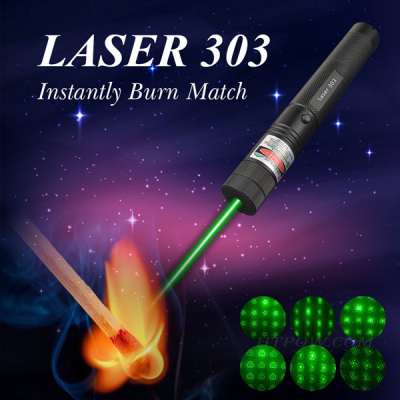The laser pointer is easy to carry, and some commercially available products have a light range of more than 50 meters, which satisfies the fresh mind of minors and is widely welcomed by primary and middle school students. Normally used laser pointers are generally divided into four levels, below level two (0.4 to 1 milliwatt). As long as the exposure time is not long, it will generally not cause harm to the eyes and skin of the human body; but laser pointers above 3-5 milliwatts Larger power can cause human damage. At present, due to lack of supervision, some laser pointers sold around campuses have a power of 100 to 300 milliwatts, which can instantly ignite matches, firecrackers, and paper, and even cause fires. In addition, primary and middle school students lack the necessary self-protection awareness. When playing, a long time exposure can cause damage to the eye retina and skin surface, resulting in permanent retinal damage and vision loss.

Harm of laser pointer
How to use the laser pointer
Because laser pointers are dangerous, especially high-power lasers for outdoor use, laser flashlights using lithium batteries, the focal point of the laser has a certain degree of heat after focusing, which can cause physical damage.
When using it, make sure that the laser cannot be aimed at others or yourself. When using it at close range, be careful not to aim at easily ignited substances.
The laser beam has a dazzling effect at close range. Do not observe the beam at close range for a long time, or deliberately observe the beam. The scattered light of the laser beam will make your eyes feel tired.
Do not lend the laser pointer to other third parties who do not understand the dangers of lasers. If you have to borrow, you must clearly tell the other party the correct usage and precautions.
How to use the laser pointer
How to choose a green laser pointer
The quality of LD (bulb), lens quality, laser crystal quality, and laser pointer power affect the quality of the laser beam. Pay attention to the following points when selecting:
1. Observe the light spot carefully in a dark place. If there is obvious flooding around the laser spot, it means that the lens is unqualified;
2. Observe whether the light spot is a perfect solid dot;
3. Carefully observe whether there is a problem of flickering and dimming when the laser is emitted. If this is the case, it indicates that there is a problem with the LD.
4. If it is a laser pointer with low power (below 20 milliwatts), it is necessary to observe whether the brightness of the laser will become darker and brighter when the laser is emitted. If this is the case, there is a problem with the circuit or LD of the laser pointer.
